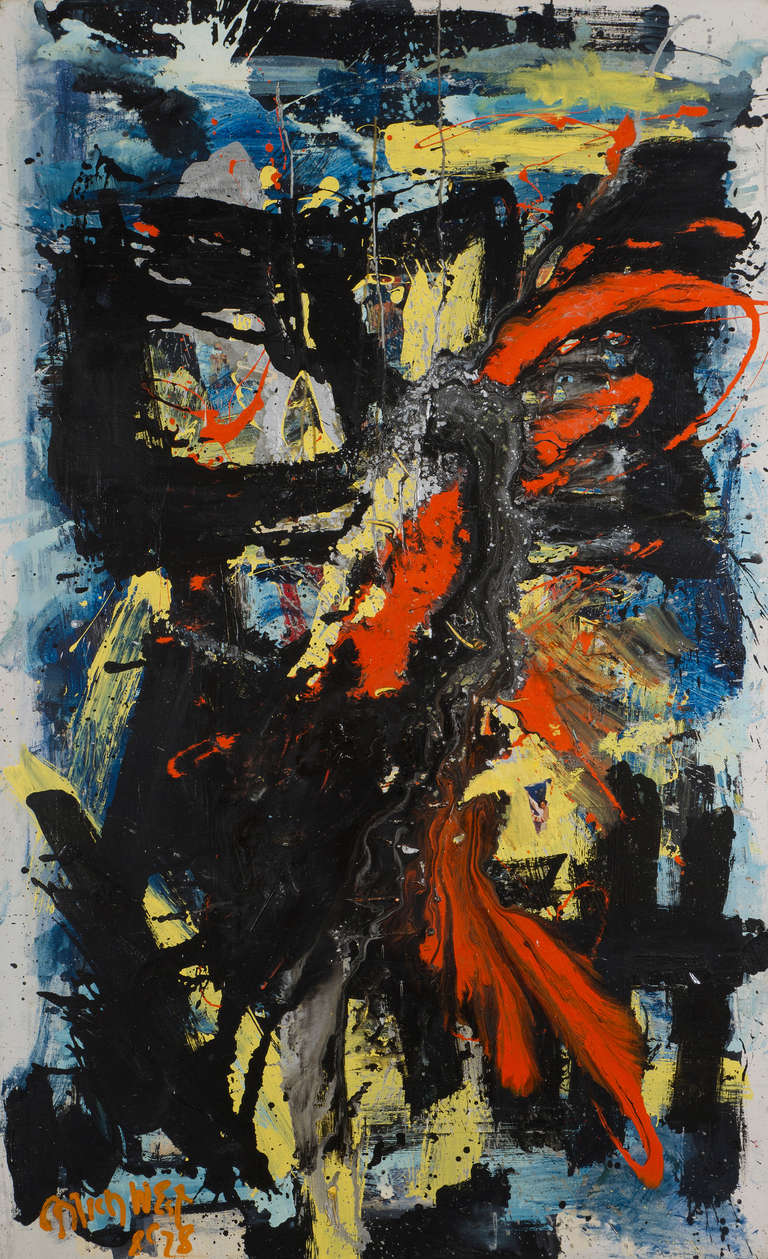Well this is my final blog post. I want to thank everyone who has supported me and read the blog over the last year. This has been a wonderful experience, and I've learned a lot. Sometimes I've written about an artist whom I'd never heard of before and discovered for a post. Sometimes I've written about a piece that I didn't have to research at all. Each post has been exciting for me and I hope you've felt the same. I've reached 365 posts and almost 32,000 views and I could not have done it without the support of my readers. I've gotten so much positive feedback over the year and it's really meant a lot to me. I thought a lot about what to post for my final artwork, and in the end I couldn't pick just one. I've selected four pieces that I want to share with you, each from an artist I've posted before, with just a bit of commentary. I hope you like them. Thank you.
J.M.W. Turner, Snow Storm: Steamboat off a Harbour's Mouth, 1842
101 x 89 in.
Turner is one of my favorite artists, which is why I wrote about him for my first post, and then again for the commemorative one hundredth post. He was in this storm and watched a ship be tossed about. Some have linked this painting with the famous story of the artist having himself tied to a mast in a storm so that he could experience it in full, but it is unknown if they are related. I find this piece to be a masterful representation of Turner's style and vision, expressing the violence and chaos of the storm.
Pablo Picasso, Night Fishing at Antibes, 1939
81 x 136 in.
Picasso, despite his brilliance and importance, is not an artist I would have expected to include in this post. However, I came across this painting today and it just about blew my mind. I find it to be incredibly beautiful and awe-inspiring. It is a perfect synthesis of Picasso's Cubism and Surrealism. The shapes are brilliant and the colors are stunning.
Albrecht Dürer, Adam and Eve, 1504
9.89 x 7.89 in.
Dürer was perhaps the greatest printmaker in all of art history, as well as being an incredible painter. His skill with line and contouring is unparalleled and he always managed to inject his prints with such sensitivity and emotion. This engraving of Adam and Eve is one of the finest examples of his skill. At this point in his career, Dürer was very interested in the perfectly symmetrical human form, and these figures are exmples of it, each standing in the Italian contrapposto pose. Adam holds a branch of mountain ash, the tree of life, and Eve the fig branch, the tree of knowledge. The four animals on theground represent the four humors (cat is choleric, rabbit is sanguine, ox is phlegmatic, elk is melancholic). Each element is rendered with great sensitivity, conveying the texture of flesh, animal, bark, and foliage.
Claude Monet, Impression: Sunrise, 1872
18.9 x 24.8 in.
This is essentially the painting that started the Impressionist movement. It was exhibited at the first show the Impressionists held in 1874, and a critic disparagingly gave them that name based on this piece. "Impression" was the term used by artists for a sketch of a scene made on the spot that would later be turned into a completed work in the studio, so to declare an impression a finished piece was in itself an act of rebellion. The painting is of Monet's home city of Le Havre. It had become an industrial port, and we can see the steam ships and factories coming to life in the early morning light. The small rowboat in the foreground is dwarfed by these machines. With its broad brushstrokes and striking colors, this painting had a huge impact on the tone and style of the movement, and also set the stage for Monet's most famous works. It is a brilliant and beautiful painting, where the small orb of orange sun casts an incredible light over the harbor.
Thanks for reading, everyone.
.jpg/809px-Albrecht_D%C3%BCrer_-_Adam_and_Eve_-_Google_Art_Project_(FQG5-68Yda1JQw).jpg)



